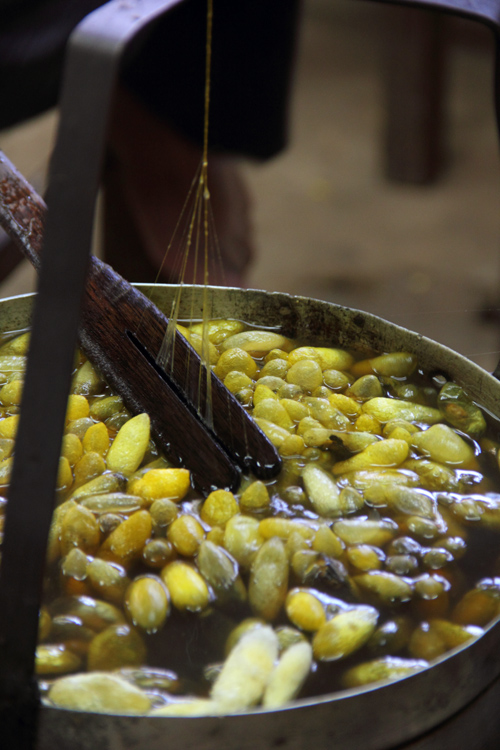
The availability of the mulberry plant is crucial for silk farming, since the silk worms only feed on mulberry leaves.

The silk moths mate for about 12 hours. The male dies right after the deed is done,
and the female lives another day or so to lay hundreds of eggs.

The worms feed on mulberry leaves for 3-4 weeks, until they're ready to do the all-important job of spinning cocoons.

The worms are then tranferred to specially woven circular bamboo trays,
so that the cocoons are more uniform in shape and are easier to collect.

The cocoons lay undisturbed for 10-12 days while they metamorphose into moths.

While some cocoons are left to yield moths for the next mating cycle,
most of them are dried up in the sun before silk threads can be extracted from them.

Each cocoon has an outer layer which is raw silk, and the inner layer which is fine silk.

The dried cocoons are boiled to ease the silk threads out. The dead worms
from these cocoons with oil, garlic and a pinch of salt are considered a delicacy.


The silk threads are then wound onto reels.

Natural colorants for dyeing the silk threads.


The threads are boiled in large pots for a few hours until they get the desired colour.

Dyed raw silk.

Dyed fine silk.


The tie-dye technique is used to dye the threads according to the pattern which they will be woven into.


Finally, the threads are warped and woven on the loom to make silk fabric.


